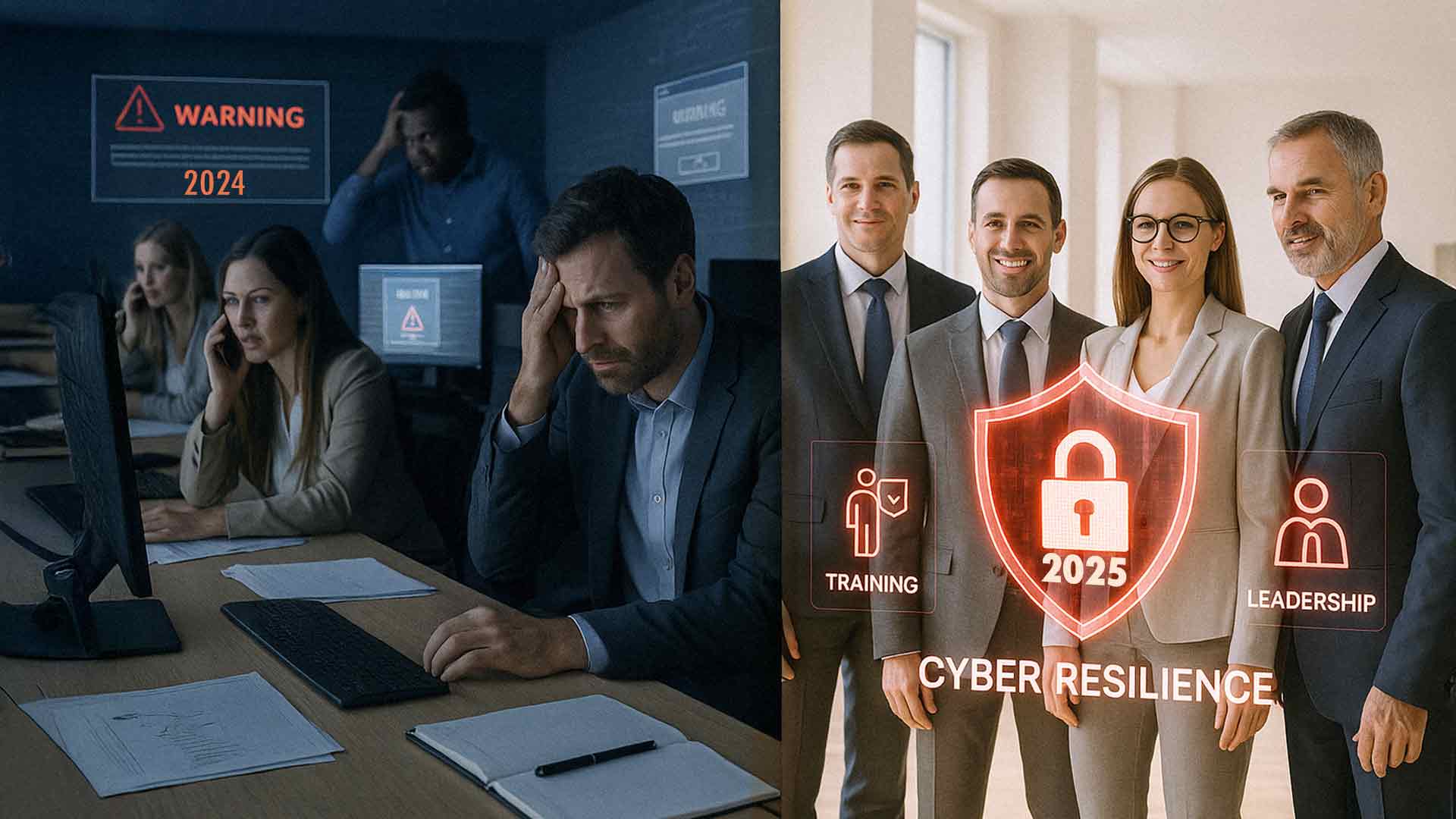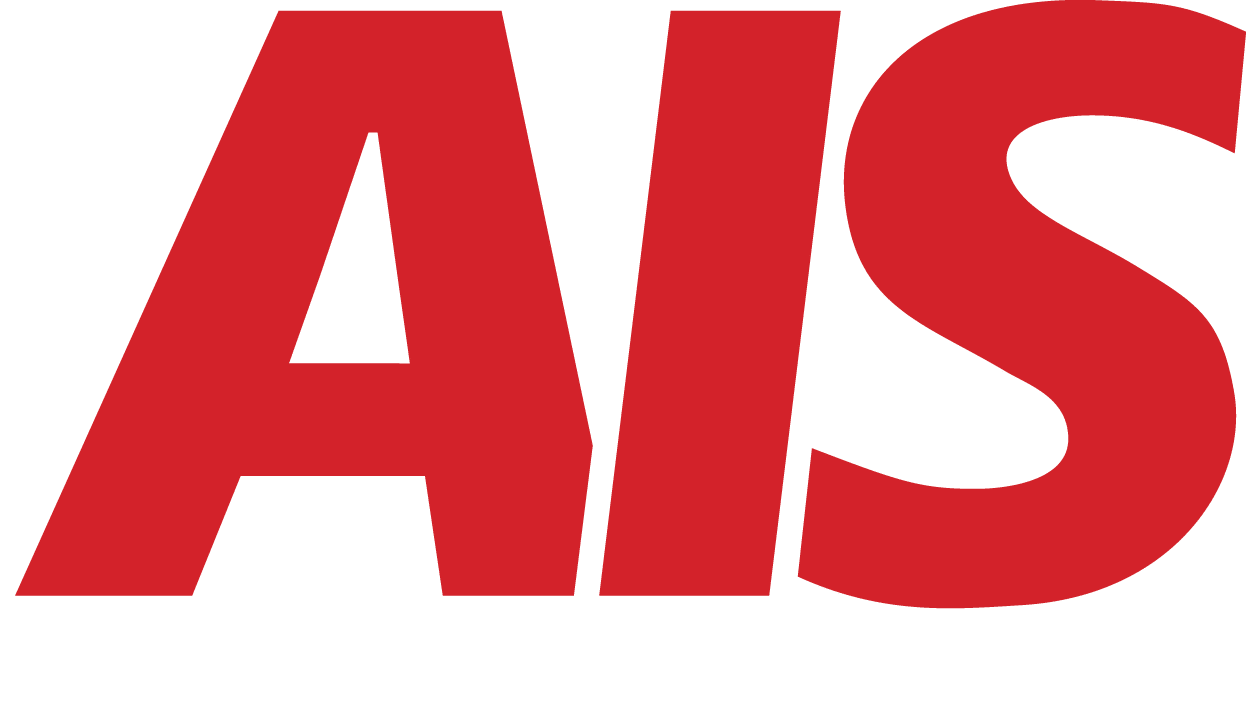The 5 Shifts SMBs Must Adopt in 2025 for Cyber Resilience
October 14th, 2025 | 6 min. read

Cybersecurity is no longer just an IT conversation. It is a business continuity issue, a customer trust issue, and in many cases, a survival issue.
The threat landscape that small and midsize businesses (SMBs) face in 2025 looks very different from what it did just a few years ago. Cyber criminals have become more strategic, attacks are increasingly automated, and the targets are no longer only large enterprises.
At AIS, we work with hundreds of SMBs that are navigating this new reality. We have seen how one overlooked security update, one untrained employee, or one missing backup can lead to days or weeks of downtime. The lesson is simple: prevention and preparation are the new defense strategy.
To build true cyber resilience, every SMB needs to make five fundamental shifts in how they view and manage cybersecurity.
1. From Employees as Weak Links to Employees as the First Line of Defense
For years, employees have been labeled as the weakest link in cybersecurity. While human error is still a leading cause of breaches, that mindset no longer helps businesses grow stronger.
In 2025 (and beyond), it is time to see employees as the first line of defense.
Every person in an organization interacts with technology daily. That means every employee has the power to either stop or enable a potential attack.
Phishing, business email compromise, and fake invoice scams all rely on one thing: a person clicking or replying without question.
The solution is not blame but empowerment. Consistent security awareness training, monthly phishing simulations, and short refresher videos can turn risky habits into reliable defenses.
When employees learn how to recognize suspicious links, verify sender identities, and report strange requests, they become an active part of your cybersecurity team.
Culture also matters. Encourage staff to speak up if they think something looks off. Reward caution rather than speed. When leadership treats cybersecurity as everyone’s responsibility, the entire organization becomes stronger.
2. From “Work Anywhere” to “Secure Everywhere”
Since remote and hybrid work are here to stay, that means your company network now extends far beyond the office walls.
Each laptop, smartphone, and Wi-Fi connection represents another potential entry point for attackers. Without proper safeguards, your organization can be exposed without realizing it.
The modern SMB must think in terms of “secure everywhere.” Security needs to follow the user, not just the device. Endpoint protection software, multifactor authentication (MFA), and virtual private networks (VPNs) create layers of protection wherever your employees log in.
Device management tools can automatically enforce security policies, install updates, and even remotely lock or wipe lost hardware. Cloud-based monitoring helps identify unauthorized connections in real time.
The most effective approach is one that balances convenience with control. Employees should be able to work from any location while you maintain confidence that data remains secure. This balance helps teams stay productive without compromising protection.
3. From Compliance to Continuous Security
Many businesses still assume that passing an audit or following a checklist equals being secure. In reality, compliance frameworks such as HIPAA, PCI, or NIST are only the foundation. They help establish minimum standards, but they do not guarantee safety.
Cyber threats evolve constantly, and attackers do not care if you are compliant. True resilience requires continuous security: an ongoing commitment to improvement, testing, and adaptation.
This means scheduling quarterly reviews of security policies, testing your backups regularly, and conducting vulnerability scans to identify new risks. It also means involving leadership in conversations about risk management instead of treating cybersecurity as a technical detail.
An effective mindset shift is to move from “once a year” to “always on.” When security becomes part of day-to-day operations, your organization develops the agility to respond to any threat quickly and effectively.
4. From Reaction to Prevention
Responding to an incident after it occurs is often too late. Once data has been encrypted or stolen, the damage is already done. Prevention is the most cost-effective and reliable strategy for protecting your business.
Start by implementing a layered defense model that combines technology, process, and people. Core preventive measures include:
- 24/7 threat monitoring through a well-qualified managed service provider (MSP).
- Regular vulnerability scanning and patch management to close known gaps.
- Multifactor authentication on every system, especially for remote access and email.
- Automated backups that are encrypted and stored offsite or in the cloud.
- Incident response planning so your team knows exactly what to do if something goes wrong.
Prevention also means visibility. Many SMBs simply do not know what is connected to their network or who has access to sensitive data. Conducting an inventory of hardware, software, and user permissions can reveal hidden vulnerabilities.
The cost of preventive action is always lower than the cost of downtime, ransom payments, and lost customer trust. By identifying and resolving issues before they escalate, your company stays one step ahead of potential attackers.
5. From “IT Problem” to “Business Priority”
Cybersecurity used to be something handled entirely by the IT department. That approach no longer works. A ransomware attack can disrupt operations, affect revenue, and damage relationships with clients and vendors. It is a business risk that deserves boardroom attention.
In a resilient organization, cybersecurity is part of strategic planning, budgeting, and decision-making. Executives regularly review security metrics the same way they track financial performance or customer satisfaction.
When leadership sets the tone, employees follow. Security becomes woven into the culture: every department considers risk before introducing new software, storing customer data, or launching marketing campaigns.
This shift also creates accountability. Security becomes part of measurable goals, and success is celebrated across the company. The result is a mature, proactive security posture that protects not only systems but also the brand and customer confidence.
The Real Meaning of Cyber Resilience
Cyber resilience does not mean eliminating all risk. It means anticipating potential threats, reducing their impact, and recovering quickly when incidents occur. The most resilient SMBs focus on preparation and adaptability.
To summarize, these are the five key shifts every SMB should make in 2025 and beyond:
- Empower employees through ongoing education.
- Protect every device, network, and connection used for work.
- Move from a compliance mindset to a continuous improvement approach.
- Prioritize prevention through layered security measures.
- Elevate cybersecurity to a core business priority.
Together, these shifts create a framework that helps organizations stay operational even under pressure. They allow leaders to make decisions with confidence, knowing that security is not an obstacle but a foundation for growth.
Getting Started: Beginning Your Cyber-resilience Journey
Cyber resilience begins with awareness. Take time to evaluate where your business currently stands. Ask questions such as:
- When was the last time our team completed security awareness training?
- Do we know where all of our data is stored and who has access to it?
- How quickly could we recover if our systems were locked by ransomware?
- Are our vendors and third-party partners following the same standards we expect internally?
If these questions raise uncertainty, you are not alone. Many SMBs simply have not had the time or expertise to formalize their cybersecurity plans.
Partnering with a trusted IT and security provider can help you identify gaps, set priorities, and build a realistic roadmap toward resilience.
At AIS, our goal is to help businesses protect what matters most: their data, their people, and their ability to serve customers without interruption.
We work alongside leadership teams to turn cybersecurity from a technical requirement into a business advantage.
The Final Say: A Small Step That Makes a Big Difference
As Cybersecurity Awareness Month approaches each October, it serves as a reminder that digital protection is an ongoing effort. The steps you take today will determine how ready you are for tomorrow’s challenges.
Start small if you need to. Schedule a short security training session, enforce MFA across your organization, or review your backup strategy. Each improvement brings you closer to full cyber resilience.
If you would like guidance, AIS offers a 15-Point Cyber Risk Assessment designed for SMBs. It provides a quick overview of your current security posture and helps identify the next steps that will make the biggest impact.
A true southerner from Atlanta, Georgia, Marissa has always had a strong passion for writing and storytelling. She moved out west in 2018 where she became an expert on all things business technology-related as the Content Producer at AIS. Coupled with her knowledge of SEO best practices, she's been integral in catapulting AIS to the digital forefront of the industry. In her free time, she enjoys sipping wine and hanging out with her rescue-dog, WIllow. Basically, she loves wine and dogs, but not whiny dogs.
Topics:



